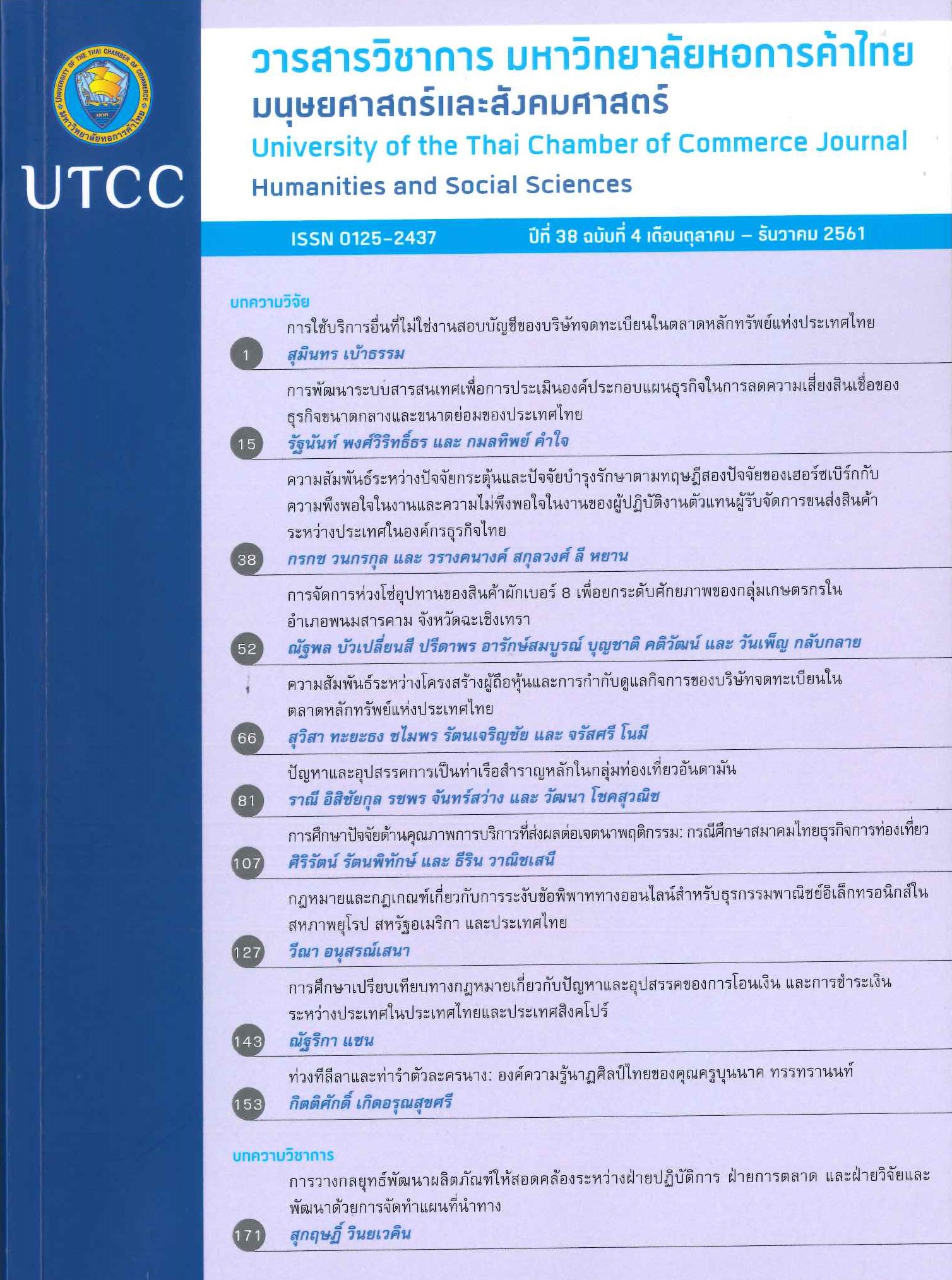Roadmapping for Aligning Product Development Strategies across Operations, Marketing, and R&D Functions
Main Article Content
Abstract
Strategic planning is an important activity in shaping the directions, measures, and activities of an organisation in order to survive and thrive in a business world with full of challenges such as limited resources, globalisations, and highly competitive environments. Good strategic planning should align with not only the visions, missions, and business strategies of a firm, but also functional strategies at the same level, such as operations strategies, marketing strategies, and research and development strategies. Firstly, this academic paper addresses the contributions of roadmapping toward these issues with the main focus on the concepts, formats, and benefits.
Secondly, the roadmapping is utilised in order to analyse the issues caused by the misalignment across functions in a case study, especially in the context of product development strategies. Lastly, the suggestion of implementing roadmapping with10 decisions in operations management was proposed.
Article Details
ลิขสิทธิ์ของบทความ
ผลงานที่ได้รับการตีพิมพ์ถือเป็นลิขสิทธิ์ของมหาวิทยาลัยหอการค้าไทย ห้ามมิให้นำเนื้อหา ทัศนะ หรือข้อคิดเห็นใด ๆ ของผลงานไปทำซ้ำ ดัดแปลง หรือเผยแพร่ ไม่ว่าทั้งหมดหรือบางส่วนโดยไม่ได้รับอนุญาตเป็นลายลักษณ์อักษรจากมหาวิทยาลัยหอการค้าไทยก่อน
References
Arasti, M., Khaleghi, M., & Noori, J. (2016). Corporate-level technology strategy and its linkage with corporate strategy in multi-business companies: IKCO case study. Technological Forecasting and Social Change, 122, 243–252.
Cheng, M., Wong, J., Cheung, C., & Leung, K. (2016). A scenario-based roadmapping method for strategic planning and forecasting: A case study in a testing, inspection and certification company. Technological Forecasting and Social Change, 111, 44-62. doi: 10.1016/j.techfore.2016.06.005
Cooper, R., & Edgett, S. (2009). Product innovation and technology strategy. Bangkok, Thailand: Product Development Institute.
Cosner, R. R., Hynds, E. J., Fusfeld, A. R., Loweth, C. V., Scouten, C., & Albright, R. (2007). Integrating roadmapping into technical planning. Research-Technology Management, 50(6), 31–48.
Daim, T. U., & Oliver, T. (2008). Implementing technology roadmap process in the energy services sector: A case study of a government agency. Technological Forecasting and Social Change, 75(5), 687–720
Edler, J., Meyer-Krahmer, F., & Reger, G. (2002). Changes in the strategic management of technology: Results of a global benchmarking study. R&D Management, 32(2), 149–164.
Farrokhzad, B., Kern, C., & Vries, M. (2008). Innovation business plan at Siemens: Portfolio-based roadmapping to convert promising innovation projects into concrete successes. International Journal of Technology Intelligence and Planning, 4(2), 153-164.
Goffin, K., & Mitchell, R. (2016). Innovation management: Effective strategy and implementation (3rd ed.). New York: Palgrave Macmillan.
Greenberg, A. (2008). When Apple failed. Retrieved May 28, 2018, from https://www.forbes.com/2008/10/29/apple-product-flops-tech-personal-cx_ag_1030apple.html#36e63acb5ab2
Groenveld, P. (2007). Roadmapping integrates business and technology. Research-Technology Management, 50(6), 49-58. doi: 10.1080/08956308.2007.11657472
Higson, C. (2008). Apple computer’s financial performance. Retrieved May 28, 2018, from http://faculty.london.edu/chigson/casestudies/pdfs/apple.pdf
IfM Education and Consultancy Services. (n.d.). Case study: IHI Corporation. Retrieved May 28, 2018, from https://www.ifm.eng.cam.ac.uk/uploads/Roadmapping/IHI_Case_Study_-_final.pdf
Jones, S. (2012). Brand like a rock star: Lessons from rock 'n' roll to make your business rich and famous. Austin, TX: Greenleaf Book Group Press.
Lee, S., & Park, Y. (2005). Customization of technology roadmaps according to roadmapping purposes: Overall process and detailed modules. Technological Forecasting and Social Change, 72(5), 567–583.
Ma, T., Liu, S., & Nakamori, Y. (2006). Roadmapping as a way of knowledge management for supporting scientific research in academia. Systems Research and Behavioral Science, 23(6), 743–755.
Phaal, R., Farrukh, C., & Probert, D. (2001). T-Plan: The fast-start to technology roadmapping: Planning your route to success. Cambridge, UK: Institute for Manufacturing.
Phaal, R., Farrukh, C., & Probert, D. R. (2005). Developing a technology roadmapping system. In Technology Management: a Unifying Discipline for Melting the Boundaries, PICMET 05, Portland International Conference on Management of Engineering and Technology, Portland, US, Jul 31- Aug 04, 2005 (pp. 99-111). Retrieved May 28, 2018, from http://citeseerx.ist.psu.edu/viewdoc/download?doi=10.1.1.455.2248&rep=rep1&type=pdf
Toro-Jarrín, M., Ponce-Jaramillo, I., & Güemes-Castorena, D. (2016). Methodology for the of building process integration of business model canvas and technological roadmap. Technological Forecasting and Social Change, 110, 213-225. doi: 10.1016/j.techfore.2016.01.009
Vatananan, R. S., & Gerdsri, N. (2012). The current state of technology roadmapping (TRM) research and practice. International Journal of Innovation and Technology Management, 9(4), 1250032-1 - 1250032-20.
Vinayavekhin, S. (2017). An exploratory study of integration in strategic planning (roadmapping). (Unpublished master’s thesis). University of Cambridge.
Willyard, C. H., & McClees, C. W. (1987). Motorola’s technology roadmap process. Research management,30(5), 13-19.
Yamashita, Y., Nakamori, Y., & Wierzbicki, A. P. (2009). Knowledge synthesis in technology development. Journal of Systems Science and Systems Engineering, 18(2), 184–202.


